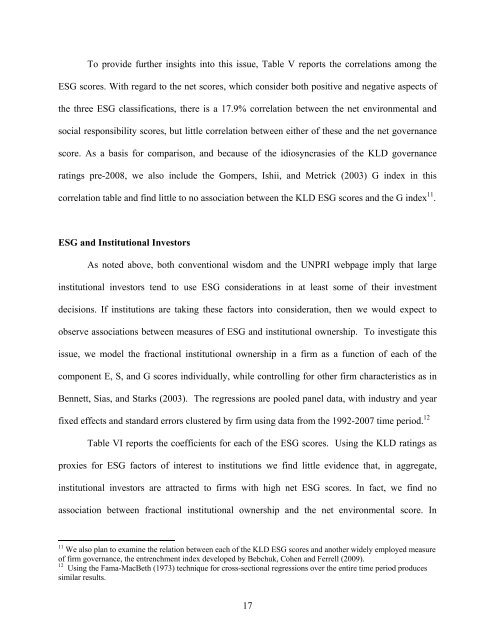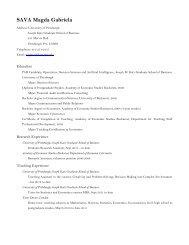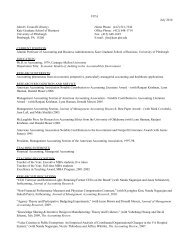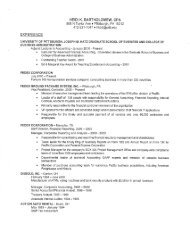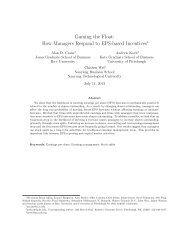Stuart L. Gillan, Jay C. Hartzell, Andrew Koch, and ... - Pitt Business
Stuart L. Gillan, Jay C. Hartzell, Andrew Koch, and ... - Pitt Business
Stuart L. Gillan, Jay C. Hartzell, Andrew Koch, and ... - Pitt Business
You also want an ePaper? Increase the reach of your titles
YUMPU automatically turns print PDFs into web optimized ePapers that Google loves.
To provide further insights into this issue, Table V reports the correlations among the<br />
ESG scores. With regard to the net scores, which consider both positive <strong>and</strong> negative aspects of<br />
the three ESG classifications, there is a 17.9% correlation between the net environmental <strong>and</strong><br />
social responsibility scores, but little correlation between either of these <strong>and</strong> the net governance<br />
score. As a basis for comparison, <strong>and</strong> because of the idiosyncrasies of the KLD governance<br />
ratings pre-2008, we also include the Gompers, Ishii, <strong>and</strong> Metrick (2003) G index in this<br />
correlation table <strong>and</strong> find little to no association between the KLD ESG scores <strong>and</strong> the G index 11 .<br />
ESG <strong>and</strong> Institutional Investors<br />
As noted above, both conventional wisdom <strong>and</strong> the UNPRI webpage imply that large<br />
institutional investors tend to use ESG considerations in at least some of their investment<br />
decisions. If institutions are taking these factors into consideration, then we would expect to<br />
observe associations between measures of ESG <strong>and</strong> institutional ownership. To investigate this<br />
issue, we model the fractional institutional ownership in a firm as a function of each of the<br />
component E, S, <strong>and</strong> G scores individually, while controlling for other firm characteristics as in<br />
Bennett, Sias, <strong>and</strong> Starks (2003). The regressions are pooled panel data, with industry <strong>and</strong> year<br />
fixed effects <strong>and</strong> st<strong>and</strong>ard errors clustered by firm using data from the 1992-2007 time period. 12<br />
Table VI reports the coefficients for each of the ESG scores. Using the KLD ratings as<br />
proxies for ESG factors of interest to institutions we find little evidence that, in aggregate,<br />
institutional investors are attracted to firms with high net ESG scores. In fact, we find no<br />
association between fractional institutional ownership <strong>and</strong> the net environmental score. In<br />
11<br />
We also plan to examine the relation between each of the KLD ESG scores <strong>and</strong> another widely employed measure<br />
of firm governance, the entrenchment index developed by Bebchuk, Cohen <strong>and</strong> Ferrell (2009).<br />
12<br />
Using the Fama-MacBeth (1973) technique for cross-sectional regressions over the entire time period produces<br />
similar results.<br />
17


